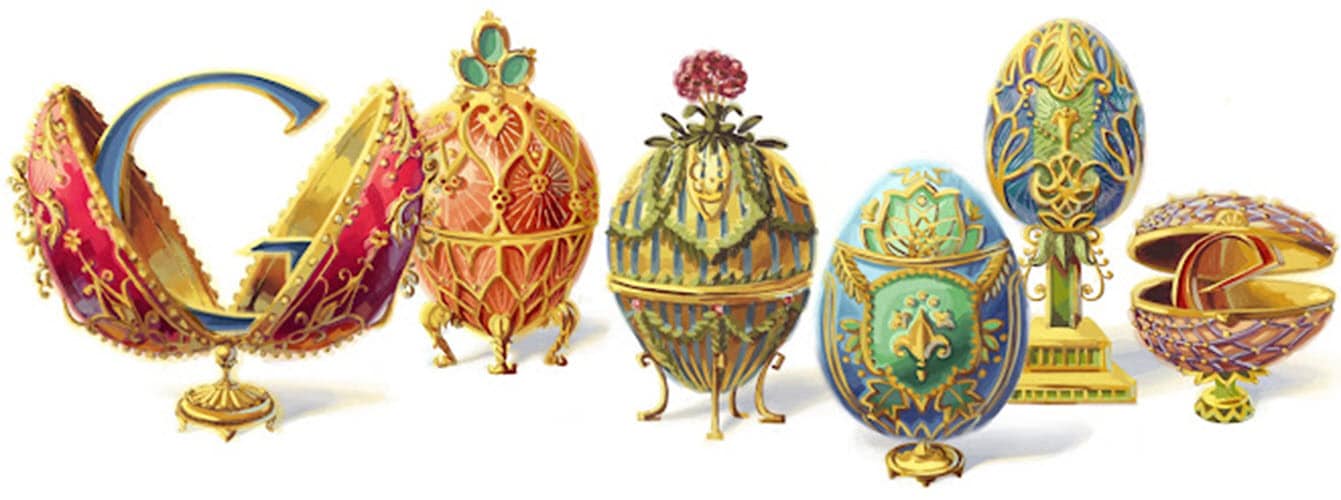Peter Carl Fabergé: Master Goldsmith and Imperial Jeweler

Image Courtesy: Google Doodle
Peter Carl Fabergé (30 May 1846 – 24 September 1920), was a Russian jeweler best known for the famous Fabergé eggs made in the style of genuine Easter eggs but using precious metals and gemstones rather than more mundane materials. He was one of the sons of the founder of the famous jewelry legacy House of Fabergé.
Life and Career
Peter Carl Fabergé was born on May 30, 1846, in Saint Petersburg, Russia, into a family with a long tradition of goldsmithing. He learned the art of jewelry making from his father, Gustav Fabergé, and went on to study at the St. Petersburg Academy of Arts and in Dresden, Germany.
In 1870, Peter Carl Fabergé took over his father’s jewelry business, expanding it and transforming it into one of the most celebrated jewelry firms in Russia. Fabergé’s craftsmanship and artistic vision gained him recognition from the Russian Imperial Court, and he was appointed as the official jeweler to the Russian Tsars.
Fabergé’s most renowned creations are the Fabergé eggs. These bejeweled, intricate eggs were commissioned by the Russian Imperial Family as Easter gifts. Each egg was a masterpiece, featuring a surprise or hidden treasure inside. Fabergé eggs became symbols of exquisite craftsmanship and luxury. Peter Carl Fabergé passed away on September 24, 1920, in Lausanne, Switzerland. He lived through significant historical events, including the Russian Revolution, which led to the downfall of the Russian monarchy and the subsequent nationalization of his business.
Award and Legacy
His works gained international acclaim and recognition. The Fabergé eggs were highly sought after by collectors and connoisseurs of fine jewelry. Today, Fabergé creations are considered priceless and are displayed in prestigious museums around the world. Peter Carl Fabergé’s legacy lies in his exceptional craftsmanship, innovation, and his unique contribution to the world of jewelry. The Fabergé eggs and other intricate works he created remain iconic symbols of luxury, elegance, and artistic excellence.
Although the Russian Revolution and the nationalization of his business led to the dispersal of Fabergé’s workshop and the end of the company, his creations continue to captivate people’s imaginations. Fabergé’s legacy has inspired subsequent generations of jewelers and artisans, and his works continue to be highly coveted by collectors. Today, the Fabergé name is associated with unparalleled craftsmanship, exquisite gemstones, and timeless elegance. The Fabergé brand has been revived, and modern Fabergé pieces are created with the same attention to detail and quality that characterized Peter Carl Fabergé’s original works.
Overall, Peter Carl Fabergé’s contributions to the art of jewelry-making and his iconic Fabergé eggs have secured him a place in history as one of the most celebrated and influential jewelers of all time. On 30 May 2012, Google celebrated Peter Carl Fabergé’s 166th Birthday with a doodle.
Observer Voice is the one stop site for National, International news, Sports, Editor’s Choice, Art/culture contents, Quotes and much more. We also cover historical contents. Historical contents includes World History, Indian History, and what happened today. The website also covers Entertainment across the India and World.

